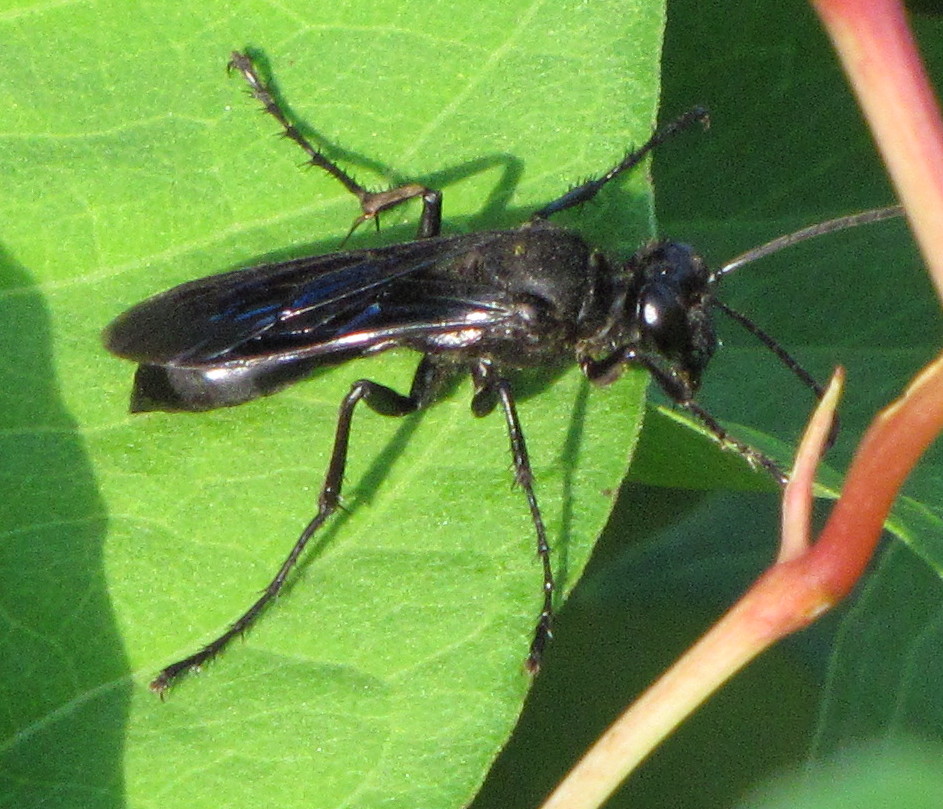
They enclose the nest and relocate the entry to a spot that’s low on one side. After she raises her first brood, her daughters take over, enlarging and guarding the nest, foraging for food for the larvae and their queen. She starts the new nest in spring by fashioning a spherical structure that’s open at the bottom. The nest is initiated by the queen, a fertile female that mated last fall and holed up over the winter while the workers, drones, and old queen died.

Not all of its inhabitants are wasps, either- inquilines (from the Latin for lodge or tenant) like some small Ichneumon wasps and, in some parts of its range, cockroaches, may co-habit in the nest. The structure is strong enough to support several hundred inhabitants, with three or four tiers of brood cells. As a DYI project, the nest is a miracle-this small insect chews on wood fibers, mixes them with saliva, and spits out gray paper, fashioning it into layer upon layer of weatherproof material up to two inches thick, 14 inches across, and two feet high, vented at the top for climate control. Nests that are built in trees and shrubs often incorporate the plant’s twigs, which makes the nest both stronger and harder to see. The bald-faced hornet is famous for the football-shaped paper nest that it suspends, between two and forty feet off the ground, from a man-made or natural support. It’s in the bee/ant/wasp order Hymenoptera and, with the yellowjackets, hornets, paper, potter and mason wasps, in the family Vespidae. And although it’s black and white, the bald-faced hornet is, taxonomically, a yellowjacket. Some anatomical features like the width of the head between the eyes and the shape of the first abdominal segment differentiate wasps from hornets, but again, common usage confuses the matter-we tend to apply the name “hornet” if the paper nest is built above ground and “yellowjacket” if it’s built underground. There are social, semi-social and solitary species of both bees and wasps. Wasps/hornets are slimmer and less hairy, hold their longitudinally “folded/grooved” wings along their bodies at rest and are “wasp-waisted” (with a thin stalk between the thorax and the first abdominal segment), and their young eat living, dead, and/or pre-chewed “meat,” mainly spiders and other insects.

In a nutshell, bees tend to be thick-waisted and hairy (those hairs enable them to collect pollen), and their young eat pollen. Is it a bee or a wasp or a hornet or a yellowjacket? That age-old question is muddied by the tendency of many people (but not BugFans) to call all black and yellow flying objects that are pointy at one end either a bee or yellowjacket.

What is it? A bug of many names-bald-faced hornet, Dolichovespula maculata, white-faced hornet, white-tailed hornet, blackjacket (a common name that also applies to another wasp) and bull wasp.

When she was at an Impressionable Age, the BugLady had a teacher who said “Don’t just tell them what it is, tell them ‘What about it’” (because when we know an organism’s name, we don’t know everything about it-knowing the name just allows us to start opening doors).


 0 kommentar(er)
0 kommentar(er)
